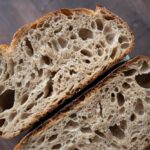In the realm of commercial bakeries, where precision and consistency reign supreme, the art of dough elasticity plays a pivotal role. It’s not merely about mixing flour, water, yeast, and other ingredients; it’s about understanding the intricate dance of gluten development and mastering the elasticity of dough to create that perfect loaf of bread or pastry. In this blog post, we delve into the significance of dough elasticity in commercial baking and how it impacts the final product.
The Science Behind Dough Elasticity:
At the heart of dough elasticity lies gluten, a protein formed when water is mixed with flour. Gluten is responsible for providing structure and elasticity to dough. When flour is combined with water, two proteins found in wheat flour, glutenin, and gliadin, form gluten strands. These strands create a network that traps gas produced by yeast during fermentation, causing the dough to rise.
Importance in Commercial Bakeries:
In a commercial bakery setting, consistency is paramount. Whether it’s producing hundreds of loaves of bread or delicate pastries, achieving uniformity in texture, volume, and taste is essential for customer satisfaction and brand reputation. Dough elasticity directly influences these factors:
- Texture: The elasticity of dough determines its texture, affecting whether a loaf of bread is light and airy or dense and chewy. For pastries, it dictates whether they are flaky and tender or tough and dense.
- Volume: Proper dough elasticity allows for optimal gas retention during fermentation, leading to better rise and volume in baked goods. This ensures that each loaf or pastry achieves the desired shape and size.
- Shelf Life: Dough with the right elasticity tends to have a better shelf life. It retains moisture without becoming soggy or drying out too quickly, maintaining freshness over time.
Achieving Ideal Dough Elasticity:
Achieving the perfect elasticity of dough requires a combination of precise measurements, proper mixing techniques, and understanding the characteristics of different types of flour. Here are some key factors:
- Flour Selection: Different types of flour contain varying levels of gluten-forming proteins. Bread flour, with its higher protein content, produces stronger gluten networks suitable for bread-making. Pastry flour, on the other hand, has less protein, yielding a more tender dough suitable for pastries.
- Mixing Technique: Proper mixing ensures even hydration of flour and thorough gluten development. Commercial bakeries often utilize mixers with specific speeds and mixing times tailored to the type of dough being prepared.
- Dough Resting and Proofing: Allowing dough to rest and undergo fermentation is crucial for gluten relaxation and gas production. Controlled proofing environments ensure consistent results batch after batch.
- Dough Handling: Gentle handling of dough during shaping and portioning preserves the gluten network and prevents it from becoming overworked, which can result in tough baked goods.
In the world of commercial baking, mastering this dough equation is akin to mastering an art form. It requires a deep understanding of ingredients, precise execution, and attention to detail. From crusty loaves of bread to delicate pastries, the elasticity of dough influences every aspect of the final product. By prioritizing proper techniques, commercial bakeries can consistently deliver high-quality baked goods that keep customers coming back for more.
Thymly Products has been a trusted name in the baking industry for over five decades, consistently delivering high-quality ingredients to bakeries, food manufacturers, and culinary professionals. Their range of dough conditioners is no exception, designed to meet the diverse needs of bakers across various applications. Thymly Products works with customers to create the best ingredient solutions for their baking needs. This has been the core of our business for many years. If you are interested in learning more please reach out to your sales representative or call 410-658-4820. We would be happy to talk with you.


